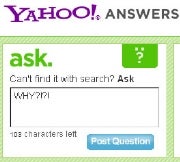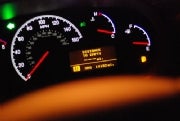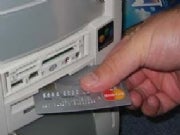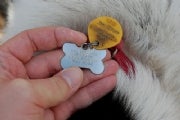Intel’s Atom D510, And NM10 Express -
Down The Pine Trail With D510MO -

Down The Pine Trail With D510MO -
When I buy something new, I want it to be bigger, better, faster, and stronger than what I had before. That’s why the idea of small form factor boxes, while visually appealing, doesn’t usually work out well for me.
It wasn’t much of a surprise, then, when the first Intel Atom-based desktop platform landed in my lab and failed to impress. Shuttle’s X27 had the deck stacked against it though; I tried to get it running smoothly with Windows Vista, and that was an exercise in disappointment. I was a little more shocked when Nvidia launched its Ion chipset and I still couldn’t stomach the Atom-powered configuration as a daily driver, to borrow from automotive parlance. Perhaps the concept underlying Atom was completely lost on me. Maybe “good enough” performance in a diminutive package just wasn’t good enough in a world so used to embracing the fastest of everything.
Intel's dual-core Atom D510Intel's dual-core Atom D510
Where the mobility-enabled platform does stand out as a decent little performer is in the netbook space. We recently included HP’s Mini 311 in our Holiday Gift Guide. I’ve been using the thing for a little over a month, and it’s remarkably responsive for such a small system. The Mini’s integrated Ion graphics are even quick enough for a little World of Warcraft.
Ion Gets Competition
But Intel is setting Ion up with a little competition. Today, the company launches its second-generation Atom-based platform called Pine Trail, which addresses some of the most stinging criticisms leveled at its Diamondville-based predecessors. Gone is the power-hungry 945GC chipset that punished Intel’s energy efficiency story when Atom first emerged. Moreover, integration is in vogue, as the memory controller and GPU migrate their way into the processor die. And the dual-core CPU no longer consists of two separate pieces of silicon on one package. The new Atom D510 is a monolithic chip.
Taken all together, this means we should be looking at a leaner, meaner Atom that’s better-suited to a desktop environment than the CPU/chipset combinations we’ve tested previously…at least, that’s the theory.
Intel's single-core Atom D410Intel's single-core Atom D410
But Who’s This Really For?The true purpose of Pine Trail isn’t to wow power users with a penchant for environmentally-friendly technology. Rather, it’s to hit a market that is just coming online. According to figures cited from internetworldstats.com, there were 361 million people using the Web back in 2000. In 2009, that number had jumped to 1.66 billion—still only a quarter of the world’s population.
In the same vein, Intel claims (via research done by Morgan Stanley) that a broadband Internet connection is one of the least economically vulnerable luxuries we enjoy today. More people would rather give up cell phones and new clothes before they pulled the plug on their cable or DSL line. Think about that for a second. It's true, isn't it?
As netbooks and small form factor desktops continue to pick up steam, Intel says its new Atom designs are the engines driving the platforms that those extremely cost-sensitive customers will buy as they join the rest of us online.
Intel is actually debuting a handful of components today: two of what it considers desktop-class processors (the Atom D510 and D410), one netbook-class processor (the Atom N450), and a new chipset (NM10) that follows in the footsteps of such concepts as P55, shifting from Intel’s usual three-chip platform to a more elegant two-chip design already popular in some of Nvidia's chipsets. Today we’re looking at the D510MO motherboard—a mini-ITX platform with an Atom D510 soldered on.






































 God bless the Internet. Where else can you assume a fake identity, pose the most inane question imaginable--like "
God bless the Internet. Where else can you assume a fake identity, pose the most inane question imaginable--like "
 3.
3.  7.
7.  11.
11.  14.
14.  16.
16.  20.
20. 
